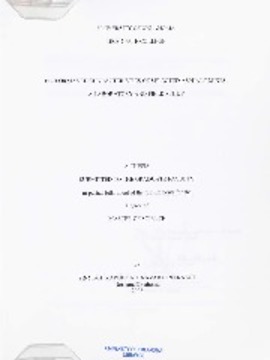| dc.description.abstract | A combined laboratory and field study was undertaken to investigate the performance characteristics of some Hot Mix Asphalt (HMA) mixes that are commonly used by Oklahoma Department of Transportation (ODOT). Four different types of loose HMA mixes collected from three project sites, namely, Davis, Tar Creek and Oklahoma City (OKC) were examined wi1h a series of laboratory testing, namely resilient modulus (MR), APA rut, fatigue and permeability . Field cores were retrieve from the sites and laboratory tests, namely, resilient modulus, APA rut and seismic modulus were performed. Field non-destructive tests were also performed in this study. The laboratory resilience modulus tests were performed with varying stress level and at three selected temperatures namely 5°C, 25°C and 40°C, as recommended in the ASTM D 4123 test methods. The test results indicate that the resilient modulus is a function of applied stress and temperature. Also, the results showed that the resilient modulus values vary with mix properties, namely binder content, binder type, air voids, percentage passing No. 200 sieve, among others. In reviewing the results, the laboratory Davis specimens resulted in the highest average resilient modulus values. followed by the OKC specimens, the Tar Creek base mix specimen, and then the Tar Creek surface mix specimen, in general, for all three temperatures. The resilient moduli of the field cores were comparatively lower than that of laboratory specimens. This is due to the differences in compaction represented by laboratory gyratory compaction and field compaction, and the resulting differences in mix properties of the specimens. A model to predict resilient modulus of HMA from the stress ratio, temperature and aforementioned specific mix properties was developed. The model was tested for its fitting as well as predicting capabilities. APA rut test results showed that the Tar Creek mixes are susceptible to rutting potential. Comparatively lower rut depths were obtained for the Davis and the OKC mixes. The difference in specific mix properties, namely, binder content, air voids and percentage passing No.200 sieve were identified as the reason for this changes. A model was developed to predict the rutting potential wi1h these varying mix properties. Attempts were made to correlate APA rut depths with resilient moduli. APA
rut depths at 2000 and 8000 repeated cycles were correlated with the MR values at three selected temperatures (5°C. 25°C and 40°C) and three specific stress ratios(0.20.0.35 and 0.50). Scattered R-squared values were obtained for the correlation of each aforementioned parameters. This may be due to the differences between resilient modulus and APA rut testing parameters and mechanisms. Rutting is expected to occur at high temperatures and with a large number of load repetitions (due to plastic flow and other mechanisms), whereas resilient modulus should present stress-strain properties of HMA under cyclic loading at intermediate temperatures and lower loading cycles. The laboratory seismic modulus test showed that the seismic modulus values were 6 to 10 limes higher than the MR values with different stress ratios. This is due 10 the differences in strain level and strain rates involved in these two test methods. The back-calculated modulus from Falling Weight Deflectometer (FWD) data showed that the Davis results are well comparable with that of laboratory MR values. Significant scatter was observed for similar comparison for the Tar Creek and the OKC sites. It is expected that the predictive models and the comparison between laboratory and field modulus results will be a helpful tool for implementing the Superpave mix design and the 2002 AASHTO design guide. | |
